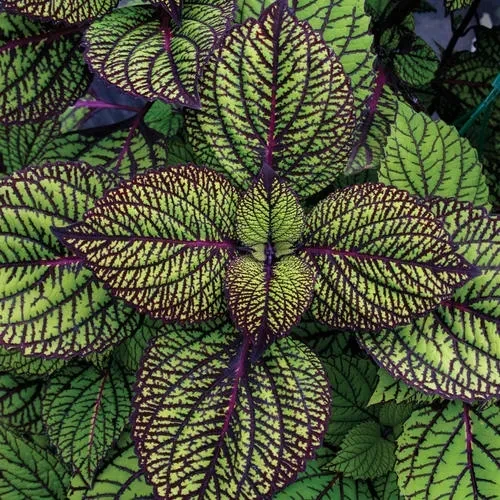Coleus is a versatile container plant because it takes sun or shade. Its boldly colored and textured leaves are an eye-catching addition to your containers. Just be careful because It can become become lanky and gangly as summer progresses, but the simple solution is pinching it back.
The simple solution to avoid leggy or lanky plants: continually pinch or cut it back. The pinching back will spur the plant to make new branches and you'll get a bushier, fuller shape. Two new branches will begin to grow from where you pinched.

You can also pinch back just under the flower buds if you don’t want the plant’s energy to be spent on producing flowers and seeds. Once the plant starts flowering the leaves lose beauty and vigor.
Around midsummer, prune your coleus plant hard regardless of whether it'll be allowed to flower. If the plant isn't maintained, it could become overgrown and its branches can snap from their weight.
The 3 Best Coleus to Grow
1 Main Street coleus are a series of varieties named for famous avenues. Every variety grows well in sun or shade and flowers late (allowing the leaves and habit to remain at their best). They also have the same vigor as one another, making it easy to grow more than one variety in a container together.
Common name: Main Street coleus series; varieties include ‘Dutch Mill Drive’, ‘Granville Street’, ‘River Walk’, ‘Rodeo Drive’, ‘Sunset Boulevard’, ‘Wall Street’, ‘Broadway’, ‘Michigan Avenue’, ‘Fifth Avenue’, ‘Abbey Road’, ‘Broad Street’ and more.
2 Under the Sea 'King Crab' coleus grows in sun or shade. Planted en masse in your garden bed it's a stunner, and it works well in your container garden. It performs best with continuous moisture, but isn't a heavy feeder—an all-purpose monthly fertilizer is sufficient. Plant ‘King Crab’ with plants that have lime green or purple flowers for a dramatic effect.
3 Fishnet Stocking coleus is a heat-tolerant, award-winning variety that is even adaptable as a houseplant.
This article originally appeared in the July/August 2015 issue of Horticulture which you can download here. And subscribe now to get every new issue of Horticulture as soon as it's published.